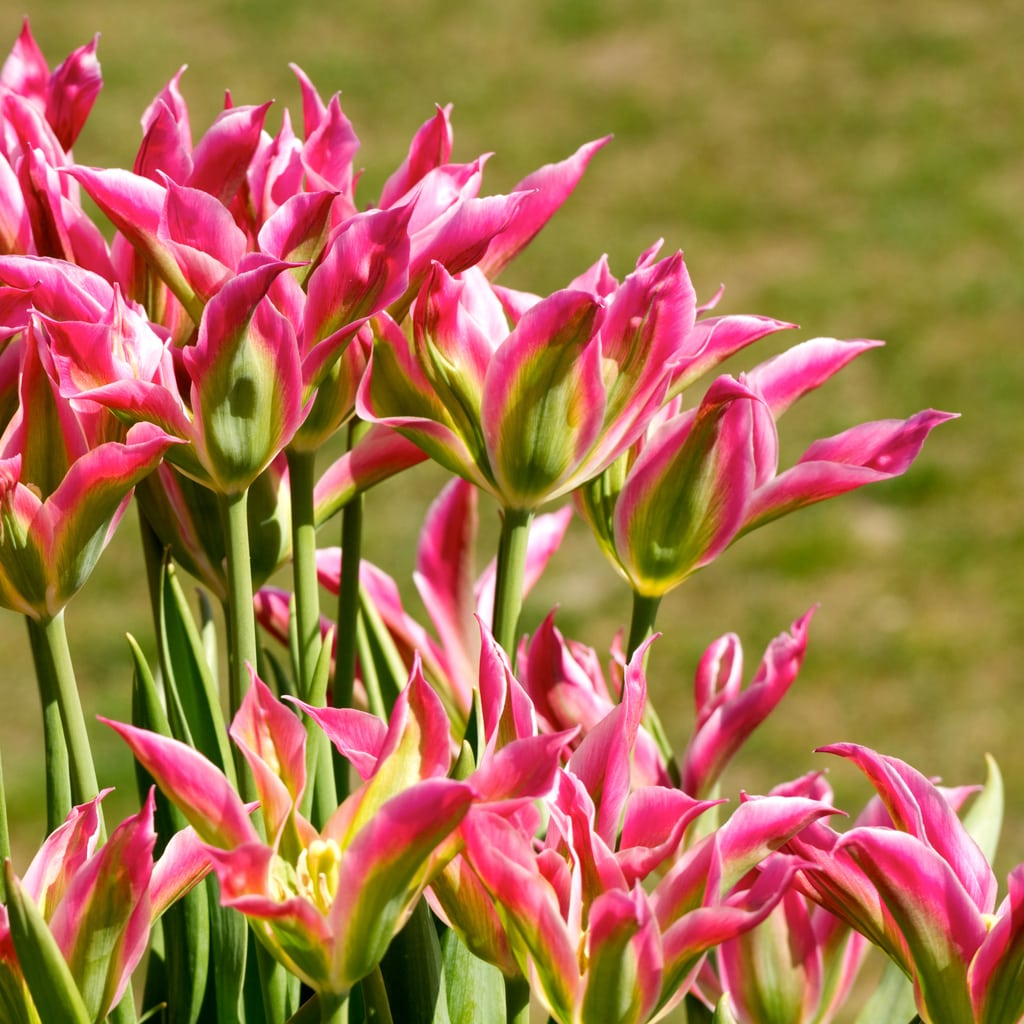Viridiflora Tulip Info: How To Plant Viridiflora Tulips


Watching spring tulips bloom is the ultimate reward for planting bulbs in the fall. If you’re looking for something a little out of the ordinary, try viridiflora tulip flowers. By growing viridiflora tulip bulbs, you’ll have a unique spring flower no one else on your block may have.
What are Viridiflora Tulips?
The name “viridiflora” is a combination of the Latin words for green and flower. It refers to the fact that all the tulips in this group have a green streak or stripe in the center of each petal. The other colors vary, but all viridiflora tulips flowers have this unique coloration of green. Dating back to the 1700's, viridiflora tulips are also notable for the fact that their flowers bloom later in spring and that they can last up to three weeks. If you plant other earlier-blooming tulips along with viridiflora, you will get several weeks of blooms. There are several different cultivars of viridiflora that vary by color and shape. Here are a few common ones:
- ‘Spring Green’ – This newer variety is white with a blush of pale green down the center of each petal.
- ‘Hollywood Star’ – This one has striking, bright red flowers with green stripes in the middle of the petals and a little feathering on the petal tips.
- ‘Doll’s Minuet’ – Doll’s Minuet is similar to lily-flowered tulips, with long, narrow petals that are bright magenta and a limited amount of green.
- ‘Flaming Spring Green’ – This variety is white with green blush down the center but also a streak of magenta on the edges of each petal.
- ‘Artist’ – Artist is a true stunner, with a deep gold-to-orange color and delicate blaze of green.
How to Plant Viridiflora Tulips
A little bit of viridiflora tulip information is all you need to get started with planting viridiflora tulip flowers in the fall. Plant the bulbs in soil that is rich, adding compost if necessary, and well-drained. Plant them to a depth of about 6 inches (15 cm.) in a spot that will get full sun to partial shade in the spring and summer months. It’s best if the bulbs are placed with the point end up. This will help them emerge earlier in the spring. Water the bulbs once they are in the ground and cover with mulch. Now, you only need to wait for spring to see the beautiful results.
Gardening tips, videos, info and more delivered right to your inbox!
Sign up for the Gardening Know How newsletter today and receive a free copy of our e-book "How to Grow Delicious Tomatoes".

Mary Ellen Ellis has been gardening for over 20 years. With degrees in Chemistry and Biology, Mary Ellen's specialties are flowers, native plants, and herbs.
-
 12 Lush Alternatives To A Lawn For Sustainable Spaces
12 Lush Alternatives To A Lawn For Sustainable SpacesAlternatives to a lawn are beautiful and also beneficial to your local ecosystem and its pollinators. Explore our top picks for plants to replace grass.
By Tonya Barnett
-
 Types Of Tomatoes Explained: Explore The Many Wonderful Shapes, Colors, Flavors, & Best Uses
Types Of Tomatoes Explained: Explore The Many Wonderful Shapes, Colors, Flavors, & Best UsesThe world of tomato varieties is vast and fascinating. Learn about the key types to grow in your garden, tailored to your preferences and space.
By Amy Grant